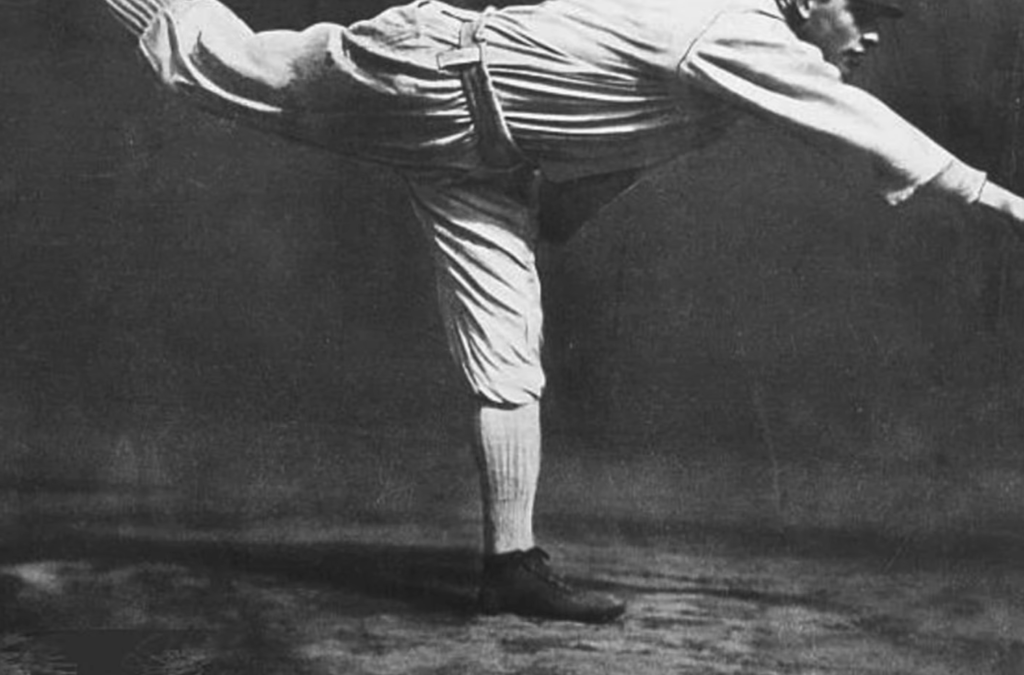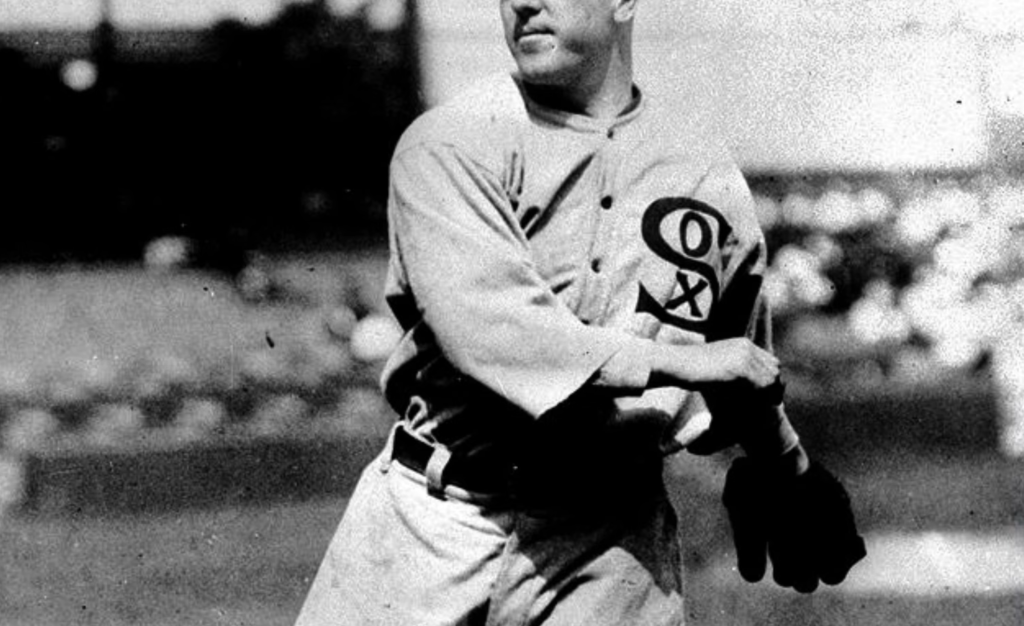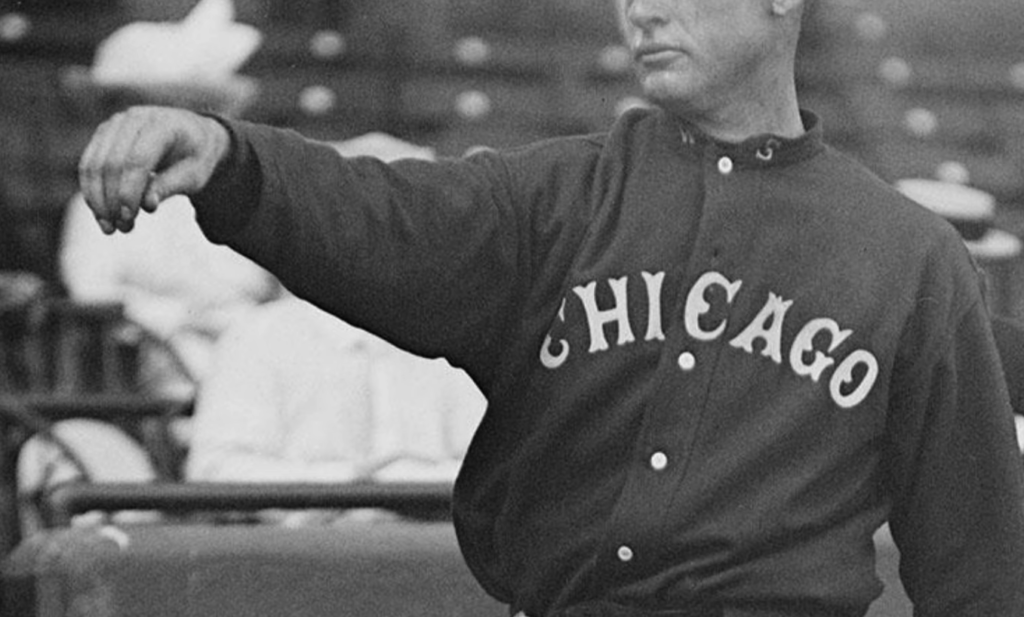Edward Augustine Walsh, better known as “Big Ed,” is an iconic figure in Major League Baseball (MLB) history. Born on May 19, 1881, in Plains, Pennsylvania, he became one of the most effective pitchers the sport has ever seen. The pinnacle of his achievements lies in his career Earned Run Average (ERA), a staggering 1.82.
This record remains unbeaten to this day, making it one of the most enduring records in baseball history. Not only did Walsh excel at keeping his ERA low, but he also holds the third-lowest career WHIP (Walks Plus Hits per Inning Pitched) in MLB history, at 1.00. His accomplishments were recognized when he was inducted into the Baseball Hall of Fame in 1946.
This article delves into the remarkable career of Ed Walsh, focusing on his record-setting ERA and the factors that contributed to his extraordinary success on the mound.
Table of Contents
What Is ERA in Baseball?
ERA, short for Earned Run Average, is a statistic that has been ingrained in the fabric of baseball lore for over a century [1]. To the uninitiated, it might sound like just another jargon, but to those who understand its intricacies, it serves as a powerful metric for evaluating a pitcher’s performance on the mound.

Now, you might be wondering, what exactly constitutes an earned run? An earned run is any run that scores without the aid of an error or a passed ball. In other words, it’s a run that the pitcher is directly responsible for giving up. This distinction is crucial because it helps separate the runs scored due to the pitcher’s performance from those resulting from defensive lapses.
As a pitcher, your ERA is more than just a number on a stat sheet; it’s a reflection of your skill, consistency, and ability to perform under pressure. A low ERA is indicative of a pitcher who consistently keeps opposing batters at bay, while a high ERA suggests struggles in effectively stifling the opposition’s offense [2].
Achieving a low ERA requires a combination of factors, including pinpoint control, deceptive pitches, strategic pitch selection, and mental toughness. Every pitch thrown carries the potential to impact your ERA, making each outing on the mound a high-stakes affair.
One of the challenges of maintaining a low ERA is the unpredictability of the game. Baseball is a sport filled with variables, from the weather conditions to the skill level of opposing batters. Even the most dominant pitchers can have off days where everything seems to go wrong, resulting in a spike in their ERA.
Moreover, ERA doesn’t always tell the full story. It doesn’t account for factors such as defensive prowess or run support from the pitcher’s own team. A pitcher could have a stellar outing, allowing only one earned run, but if their team fails to score any runs in support, they could still end up with a loss.
Despite its limitations, ERA remains one of the most widely used metrics for evaluating pitchers. It provides a snapshot of a pitcher’s performance over the course of a season and serves as a benchmark for comparison with their peers.
For aspiring pitchers, understanding the intricacies of ERA is essential for honing their craft. It serves as a barometer of progress and highlights areas for improvement. Whether it’s refining mechanics, developing new pitches, or enhancing mental fortitude, every aspect of a pitcher’s game contributes to their ability to lower their ERA.
In the end, ERA is more than just a statistic; it’s a testament to the timeless struggle between pitcher and batter, a reflection of the endless pursuit of excellence on the diamond. As a pitcher, it’s a constant reminder of the challenges and rewards that come with stepping onto the mound, ready to do battle with the forces of opposing offenses.
Why Is ERA Stat So Important?
The ERA (Earned Run Average) stat holds significant importance in the world of baseball for several reasons, each highlighting its role as a key metric for evaluating pitchers’ performances and understanding the dynamics of the game:
Measure of Pitcher Performance:
ERA serves as a primary indicator of a pitcher’s effectiveness in preventing opposing teams from scoring runs. It encapsulates the fundamental objective of pitching: to keep the opposing team off the scoreboard. A low ERA reflects a pitcher’s ability to consistently execute pitches, induce outs, and limit the damage caused by opposing batters [3].

Standard Metric for Comparison:
ERA provides a standardized benchmark for comparing pitchers across different teams, leagues, and eras. It allows fans, coaches, scouts, and analysts to assess pitchers’ performances objectively and make informed judgments about their skill levels. By comparing ERAs, one can gauge which pitchers are excelling and which might be struggling relative to their peers.
Historical Context and Tradition:
ERA has a rich history dating back to the early days of baseball. Its longevity and widespread use have established it as a fundamental statistic deeply ingrained in the sport’s culture. Over the years, countless legendary pitchers have left their mark on the game, with their ERAs serving as a testament to their dominance on the mound.
Predictor of Team Success:
Pitching is often regarded as the most critical aspect of a baseball team’s success, and ERA plays a vital role in assessing a team’s pitching staff’s overall effectiveness. Teams with lower collective ERAs tend to perform better defensively, giving their offense a better chance to secure victories. Therefore, ERA can be a predictive tool for forecasting team success over the course of a season.
Fantasy Baseball and Betting:
In the realm of fantasy baseball and sports betting, ERA holds immense significance as a key statistic for evaluating player performance and making informed decisions. Fantasy baseball managers often rely on pitchers’ ERAs to assess their fantasy team’s pitching strengths and weaknesses and make strategic lineup decisions.
Pitcher Contracts and Salary Negotiations:
ERA can influence contract negotiations and salary discussions for professional pitchers. Players with consistently low ERAs are highly valued commodities in the baseball market and can command lucrative contracts. Conversely, pitchers with high ERAs may face challenges in securing favorable deals or endorsements.
Psychological Impact:
For pitchers, ERA can have a profound psychological impact. A low ERA can instill confidence and boost morale, leading to better on-field performance. Conversely, a high ERA may weigh heavily on a pitcher’s psyche, leading to self-doubt and performance anxiety. Managing ERA effectively requires not only physical skill but also mental resilience and fortitude.

What Is Considered a Good ERA?
Well, like many things in baseball, it depends. The league average ERA varies from year to year, but it usually hovers around 4.00. If a pitcher has an ERA below this, they’re generally considered to be above average. However, the real elite pitchers in the game will often have ERAs below 3.00 [4].
An ERA under 2.00 is exceptional and quite rare. These are often achieved by the best pitchers in the game during their peak years. For instance, in the 2020 season, Cleveland Indians’ ace Shane Bieber led the Major League with an ERA of 1.63.
The formula to calculate ERA is straightforward: ERA=(EarnedRuns/InningsPitched)×9.
This formula ensures that the performance measure is standardized to a nine-inning game, the typical length of a Major League Baseball (MLB) game, allowing for consistent comparisons between pitchers regardless of the actual innings they pitched.
A “good” ERA score in baseball has varied over the years, influenced by numerous factors including the era of play (dead-ball era vs. modern live-ball era), the ballpark dimensions, and the offensive environment of the league. Historically, an ERA between 2.00 and 3.00 is considered excellent, with anything below 2.00 being exceptional [5]. In today’s game, where offensive strategies and player conditioning have evolved, an ERA under 4.00 is generally seen as good, and an ERA under 3.00 is considered outstanding.
However, ERA doesn’t exist in a vacuum. It’s essential to consider it alongside other pitching metrics like WHIP (Walks + Hits per Innings Pitched), FIP (Fielding Independent Pitching), and strikeouts per nine innings (K/9) for a more rounded view of a pitcher’s effectiveness. ERA can sometimes be misleading due to its dependency on the team’s defensive performance; for instance, a pitcher with a high ERA might actually be performing well but suffers from poor team defense, leading to unearned runs that do not affect their ERA.
Moreover, the context of the league averages is crucial. In a pitcher’s era where scoring is down, a “good” ERA might be lower than in an offensive boom period [6]. Therefore, when evaluating a pitcher’s ERA, it’s beneficial to compare it to the league average ERA and the ERA of pitchers in similar roles or innings pitched brackets.
In contemporary baseball analytics, ERA remains a fundamental indicator of pitching prowess but is complemented by advanced metrics that isolate a pitcher’s performance from their team’s defensive capabilities. This holistic approach to pitcher evaluation recognizes the complexity of baseball performance and the myriad factors that can influence a game’s outcome.
However, it’s important to remember that the ERA is just one measure of a pitcher’s performance. It doesn’t take into account factors like the quality of a team’s defense, which can have a significant impact on how many runs a pitcher allows. Furthermore, a pitcher could have a low ERA but still lose a lot of games if their team doesn’t score many runs.

Ed Walsh’s Career:
Early Life:
Ed Walsh was born on May 14, 1881, in Plains Township, Pennsylvania, to Irish immigrant parents [7]. From an early age, Walsh displayed a natural aptitude for baseball, spending countless hours honing his skills on makeshift diamonds and sandlots in his hometown. Despite humble beginnings, Walsh possessed an undeniable talent that set him apart from his peers.
College Career:
Walsh’s journey to baseball stardom began during his college years at Niagara University in Niagara Falls, New York. It was here that he first garnered attention for his exceptional pitching abilities, dominating opposing batters with his blazing fastball and devastating spitball—a pitch that would later become his trademark.
During his time at Niagara University, Walsh’s talent on the mound attracted the interest of scouts from Major League Baseball teams, who recognized his potential to excel at the professional level. However, it wasn’t until 1902 that Walsh’s dreams of playing in the big leagues would become a reality.
MLB Career:
Peak Years:
Ed Walsh’s Major League Baseball (MLB) career can be divided into distinct phases, with his peak years standing out as a testament to his extraordinary talent and unparalleled success on the mound. From 1904 to 1912, Walsh established himself as one of the most dominant pitchers in the game, consistently delivering stellar performances and earning accolades along the way.
During this period, Walsh’s remarkable pitching arsenal and strategic acumen propelled him to the forefront of the baseball world. His mastery of the spitball, fastball, and changeup made him a formidable opponent for any lineup, while his ability to outthink batters and execute pitches with precision set him apart as a true craftsman of the game.
Later Career:
Despite facing numerous challenges and setbacks later in his career, Walsh continued to compete at a high level, showcasing his resilience and determination in the face of adversity. While injuries and declining performance may have slowed him down, Walsh’s passion for the game never waned, and he remained a respected figure both on and off the field.
Though his statistics may have dipped in his later years, Walsh’s impact on the game remained undiminished. His leadership, experience, and veteran presence proved invaluable to his teammates and coaches, serving as a source of inspiration for those around him.
Managerial Record:
Following his retirement as a player, Ed Walsh transitioned into a managerial role, where he continued to leave his mark on the baseball world. While his managerial record may not have reached the same heights as his playing career, Walsh’s strategic insight, knowledge of the game, and leadership abilities made him a respected figure in the dugout.
As a manager, Walsh instilled a sense of discipline, work ethic, and camaraderie among his players, fostering an environment conducive to success on the field [8]. Though his tenure as a manager may have been relatively short-lived, Walsh’s influence continued to be felt within the baseball community for years to come.

Ed Walsh Pitches:
Spitball:
One of the most iconic aspects of Ed Walsh’s pitching repertoire was his mastery of the spitball. A pitch known for its unpredictable movement and deceptive spin, the spitball was Walsh’s secret weapon on the mound. By applying saliva or other substances to the ball before throwing it, Walsh was able to generate movement that baffled opposing batters and kept them off balance.
Fastball:
In addition to his devastating spitball, Walsh also possessed a blazing fastball that routinely clocked in at speeds unmatched by his contemporaries. With pinpoint accuracy and explosive velocity, Walsh’s fastball was a weapon to be feared, capable of blowing away even the most seasoned hitters. Combined with his deceptive delivery and impeccable command, Walsh’s fastball made him a nightmare for opposing lineups.
Changeup:
Rounding out Walsh’s pitching arsenal was his devastating changeup—a pitch designed to disrupt the timing and rhythm of opposing batters. With its subtle movement and deceptive speed differential, Walsh’s changeup kept hitters guessing and often resulted in weakly hit balls or swinging strikeouts. Whether used as a complement to his fastball or as a standalone pitch, Walsh’s changeup was a testament to his mastery of pitching fundamentals.
Legacy:
As one of the greatest pitchers to ever grace the diamond, Ed Walsh’s legacy looms large in the annals of baseball history. From his dominant performances on the mound to his leadership and sportsmanship off the field, Walsh embodied the ideals of excellence, integrity, and perseverance that define the game of baseball.
Though his playing days may be long gone, Walsh’s impact continues to be felt by players, coaches, and fans alike. His record-breaking achievements, unwavering determination, and lasting influence serve as a source of inspiration for generations of baseball enthusiasts, ensuring that his name will forever be synonymous with greatness in the world of baseball.
What ERA Does Ed Walsh Have?
Edward Augustine Walsh, famously known as “Big Ed,” is a name that echoes through the annals of baseball history. Born on May 19th, 1881 in Plains, Pennsylvania, he is one of the most revered pitchers in Major League Baseball (MLB) [9]. Throughout his career, Walsh has left an indelible mark on the sport, especially when it comes to his Earned Run Average (ERA).

Ed Walsh’s career ERA stands at an impressive 1.82. This is not just a record for him, but it holds the distinction of being the lowest major league ERA ever posted. This record has stood the test of time and remains unbroken to this day, making it one of the most significant achievements in baseball history.
In 1908, Walsh had a standout season that solidified his place among baseball’s greats. He recorded a forty-win season, a feat no pitcher has accomplished since. During this season, he won forty games, lost fifteen, and posted an ERA of 1.42. In addition to this, he set a league record with 11 shutouts. This season remains one of the most remarkable individual performances in the history of baseball.
Walsh’s exceptional ERA wasn’t the only record he held. He also has the third-lowest career WHIP (Walks Plus Hits per Inning Pitched) in MLB history, at 1.00. This record is even more notable as it’s the lowest ever for a right-handed pitcher.
Beyond these records, Walsh’s career was filled with other noteworthy accomplishments. He has the most wins with an ERA under 2.00, totaling 195 over his career [10]. Even in a season where he lost 20 games, he still managed to maintain an ERA of 1.27. This is a testament to his consistency and ability to perform at a high level, even in challenging circumstances.
Despite these impressive stats, Ed Walsh was more than just a collection of records. He was a player who brought passion and dedication to every game he played. His tenacity on the mound, combined with his exceptional skill, made him a favorite among fans and fellow players alike.
His contribution to baseball was recognized in 1946 when he was inducted into the Baseball Hall of Fame. The honor was well-deserved, acknowledging his impact on the sport and cementing his legacy as one of the greatest pitchers in history.
How Could He Improve His ERA?

But how can he do it? Here are some strategies that could help:
Focus on Strikeouts
The more batters a pitcher strikes out, the fewer opportunities there are for runs to score. By increasing the number of strikeouts, a pitcher can directly decrease the number of runners on base, thereby reducing the potential for earned runs. To improve strikeout rates, a pitcher can work on developing a killer pitch like a fastball or a curveball, or even better, perfect a combination of pitches that leaves batters guessing.
Limit Walks
Walks can be detrimental to a pitcher’s ERA. Every walk is a free pass to first base for the opposing team, increasing the chances of an earned run. Therefore, a pitcher must strive to limit walks. This can be achieved by improving control and command over pitches, ensuring they find the strike zone more often than not. Regular practice and refining pitching mechanics can greatly help in achieving this.
Keep the Ball in the Park
Home runs can quickly inflate a pitcher’s ERA. To prevent this, a pitcher should focus on keeping the ball in the park. This can be done by inducing ground balls and pop-ups, which are less likely to result in home runs. A pitcher can work on his pitch selection and placement to encourage these types of hits. For instance, sinkers and changeups can induce ground balls, while high fastballs can lead to pop-ups.
Work on Mental Toughness
Baseball is as much a mental game as it is a physical one. A pitcher must be able to handle pressure, maintain focus, and stay composed in high-stakes situations. This mental toughness can help a pitcher get out of tough innings without allowing earned runs. Techniques like visualization, mindfulness, and breath control can help improve mental toughness.
Study the Opponents
Knowledge is power in baseball. The more a pitcher knows about his opponents, the better he can strategize to get them out. This involves studying hitters’ tendencies, strengths, and weaknesses, and adjusting the pitching approach accordingly. For example, if a hitter struggles with off-speed pitches, a pitcher can use more of those when facing that hitter.
Foster a Good Relationship with Catchers
A good pitcher-catcher relationship can significantly contribute to a lower ERA. Catchers often call the game, deciding what pitches should be thrown based on their knowledge of the batters and game situations. A pitcher who trusts his catcher’s calls and can execute them effectively will likely see an improvement in his ERA.
Regular Rest and Recovery
Physical fitness and conditioning play a crucial role in a pitcher’s performance. Regular rest and recovery periods can prevent fatigue and injury, which can affect a pitcher’s ability to perform optimally. This means following a proper training regimen, getting enough sleep, maintaining a balanced diet, and seeking prompt medical attention for any injuries [11].
Use Data Analytics
In the modern game, data analytics can provide valuable insights for improving performance. For pitchers, this could include studying heat maps to understand where they throw most effectively or using spin rate data to optimize their pitches. By leveraging these tools, a pitcher can make informed adjustments to his game, potentially leading to a lower ERA.

FAQ:
What pitcher has the lowest career ERA?
The pitcher with the lowest career ERA in Major League Baseball is Ed Walsh, who boasts a career ERA of 1.82.
Is Ed Walsh in the HOF?
Yes, Ed Walsh was inducted into the Baseball Hall of Fame in 1946.
How many innings did Ed Walsh pitch?
Ed Walsh pitched a total of 2,964 1/3 innings during his professional career.
Is a 3.78 ERA good?
In general, a 3.78 ERA is above average. The league average ERA varies from year to year and between leagues, but it typically hovers around 4.00.
What is a good ERA+?
An ERA+ over 100 is considered above average, while an ERA+ under 100 is below average. An ERA+ of 150, for example, means the pitcher’s ERA was 50% better than the league average.
Who has the best ERA ever?
Ed Walsh holds the record for the best career ERA ever in Major League Baseball, with an ERA of 1.82.
Is 0 a good ERA?
Yes, an ERA of 0 is excellent. It means that a pitcher has not allowed any earned runs.
What is a respectable ERA?
A respectable ERA would generally be around 3.50 or lower. This indicates that a pitcher is above average in preventing earned runs.
Is a higher ERA good or bad?
A higher ERA is bad as it indicates that a pitcher is allowing more earned runs per nine innings.
What is the peak age in MLB?
The peak age for players in Major League Baseball is generally considered to be around 27-30 years old.
What is the peak age in baseball?
In baseball, players generally reach their peak performance between the ages of 27 and 30.
Is Ed Walsh a Hall of Famer?
Yes, Ed Walsh was inducted into the Baseball Hall of Fame in 1946.
Who taught Satchel Paige to pitch?
Satchel Paige credited his ability to pitch to his childhood friend and mentor, Edward Byrd, who taught him how to throw a baseball when they were kids.
What was the spitball, and why was Ed Walsh known for it?
The spitball was a pitch that involved applying saliva or other substances to the ball to alter its trajectory and movement. Ed Walsh was known for his exceptional command and effectiveness with the spitball, which helped him confound opposing batters and achieve remarkable success on the mound.
Did Ed Walsh have any other notable achievements?
In addition to his on-field success, Ed Walsh was also known for his leadership and sportsmanship. He served as a mentor to younger players and was respected by teammates and opponents alike for his professionalism and dedication to the game.
What was Ed Walsh’s career like after retiring as a player?
After retiring from playing, Ed Walsh transitioned into a managerial role, where he continued to contribute to the sport. While his managerial record may not have reached the same heights as his playing career, Walsh’s knowledge of the game and leadership abilities made him a respected figure in the baseball community.
Useful Video: Big Ed Walsh: The Legend of a Dominant Pitcher (1881–1959)
References:
- https://en.wikipedia.org/wiki/Ed_Walsh
- https://baseballhall.org/hall-of-famers/walsh-ed
- https://www.baseball-reference.com/players/w/walshed01.shtml
- https://sabr.org/bioproj/person/big-ed-walsh/
- https://www.mlb.com/player/ed-walsh-123878
- https://pabook.libraries.psu.edu/literary-cultural-heritage-map-pa/bios/Walsh__Edward
- https://www.baseball-reference.com/bullpen/Ed_Walsh
- https://www.baseball-almanac.com/players/player.php?p=walshed01
- https://www.wikiwand.com/en/Ed_Walsh
- https://bleacherreport.com/articles/73065-big-ed-the-story-of-ed-walsh
- https://baseballegg.com/ed-walsh/






Leave a Reply